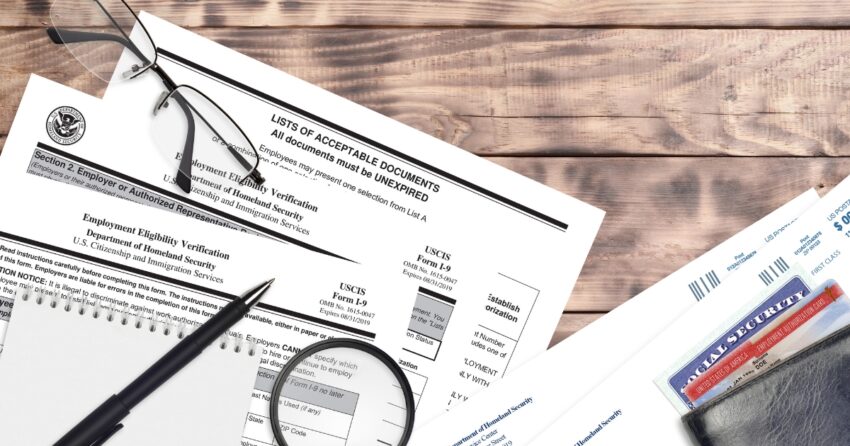The extensive use of technology and the internet in banks, fintech companies, and other industries stress the need for standards to combat financial crimes like money laundering & terrorist financing. KYC (Know Your Customer) regulatory compliance helps financial sectors verify the identity of their customers before the onboarding process. KYC document verification is a crucial element of KYC compliance and serves to establish and verify identities in financial systems. This article will provide you with insights into KYC document verification, its essential criteria, its significance, and future potential.
What is KYC Document Verification?
KYC Document verification is a process that involves collecting, verifying, and authenticating documents containing identifiable information to verify a customer’s identity. In simple words, it encompasses validating customer identity by examining the provided identity documents. Typically, the required documents include proof of identity, proof of address, proof of occupation, and transaction records.
For instance, the bank requires the customer to undergo KYC document validation, when opening a bank account. It is to make sure that the person is legitimate and holds the financial capacity to maintain a balance in his account or avail of banking services, at the very least. Banks may employ online document verification via smartphone or require customers to visit nearby branches carrying both original duplicate copies of ID documents.
Essential Criteria
The KYC document validation includes the collection and verification of documents, and then categorizing the customer profile to access risks associated with them. The following documents are collected during this process:
Proof of Identity: It requires customers to provide authentic and government-issued documents including national ID cards, driver’s licenses, passports, etc.
Proof of Address: The customers are also mandated to provide utility bills, rental agreements, bank statements, etc.
Proof of Occupation/Income: It includes collecting income statements, salary slips, offer letters, etc.
Transaction Records: It mandates customers to provide checks, money orders, etc.
After document collection, verification, and risk assessments, the customers are onboarded successfully. The transactions and activities of customers are regularly monitored to detect suspicious activity.
Types of KYC Document Authentication
Manual Verification
This process involves collecting hard copies of the identity documents from the customers. To further verify their identity, the customers may be asked to bring original identity documents for validation. Skilled professionals are allocated the tasks to verify and validate the submitted documents.
Active Verification
The process involves the use of various technological solutions biometric verification, live video interactions, and real-time database checks to confirm the identity of an individual. Video KYC technology and mobile KYC are the instances of KYC ID authentication. This type of KYC verification not only verifies the submitted documents but also establishes an immediate means of verification.
Passive Verification
Passive verification is a process that involves verifying the user’s identity without the need for any additional action. It helps to fight fraud by verifying whether the user is real or not and detect fraudsters before they attempt to access the service. Various entities like government bodies and private sectors are implementing passive verification as a part of their verification process.
How KYC Document Verification is Significant?
KYC document authentication enables financial institutions to verify users’ identities seamlessly and helps them obstruct attempts to exploit false or stolen identities. the process reduces the risks linked to financial crimes like money laundering and terrorist financing. Financial institutions can detect suspicious activities and comply with anti-money laundering (AML) guidelines.
Moreover, FIs can actively monitor customers’ activities and transactions by cross-verifying the documents whether the users are authentic. It keeps track of customer’s behavior and also helps to detect unusual transactions.
Additionally, it makes the customer onboarding process smooth and streamlined. Customers can complete their identity verification without waiting for a long time and access financial services easily. This approach develops a reliable and strong relationship between businesses and customers and also improves user experience.
Technology Integration in KYC
To streamline the customer onboarding process, regulators are turning to the integration of technology in the verification process, enabling faster and more accurate customer authentication. Various technologies are utilized by For instance, Advanced optical character recognition (OCR) facilitates the quick extraction of text information from documents like national ID cards, passports, driver’s licenses, etc. While ML allows smooth comprehension of document format and security features.
Implementing biometric verification in KYC solutions introduces an extra layer of security by making use of facial recognition, fingerprint scanning, iris patterns, etc. This approach also makes it challenging for illicit actors to exploit or forge identity documents.
Future Potential
KYC document verification is getting robust with the evolving technology and supports businesses in regulatory compliance. Various sectors such as banks, fintech companies, and travel agencies, are shifting towards adopting digital identity and documents, to make the process quicker and accurate.
Currently, most of the KYC vendors prefer decentralization for data storage. Sooner or later, blockchain technology will possibly assume a takeover of KYC identity databases globally, spanning all regulated jurisdictions. Owing to its inherent advantages, this practice will potentially be adopted as a required standard in the KYC AML Guide sectors.
Shortly, KYC document verification is a crucial element in customer onboarding. It helps businesses to fight against fraud, money laundering, and other financial crimes. Despite facing a few challenges, its evolution alongside emerging technologies is encouraging.


